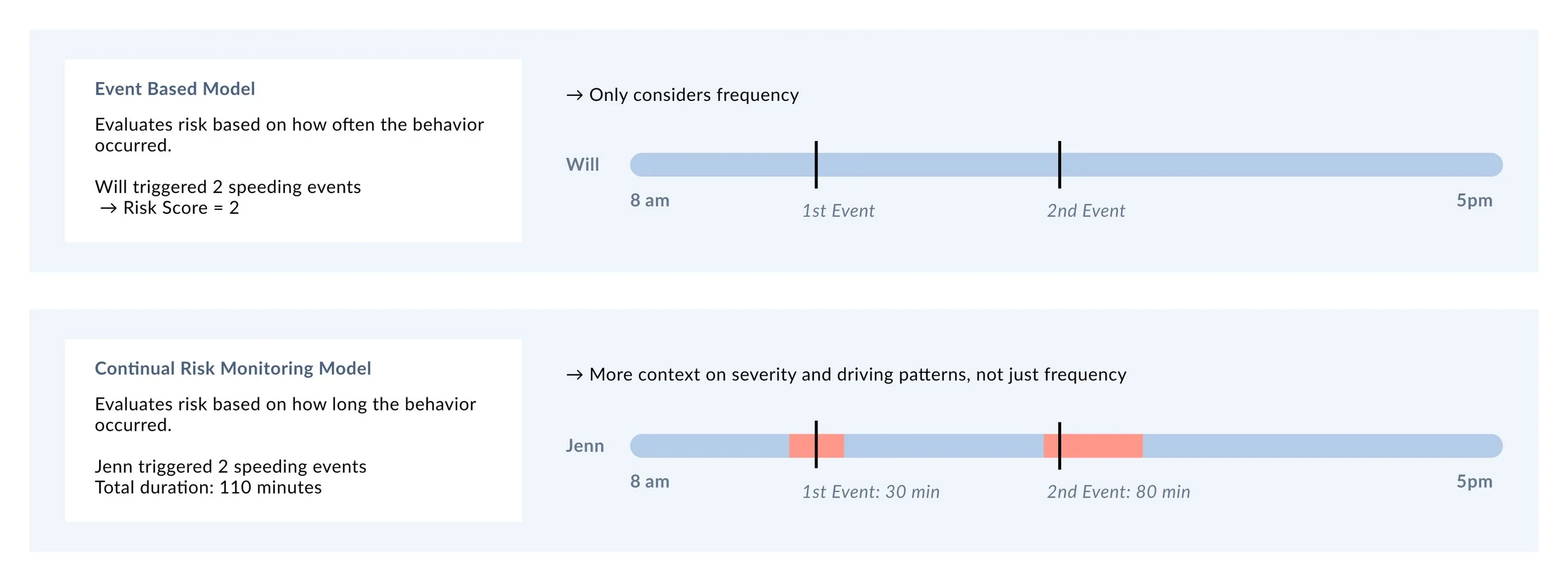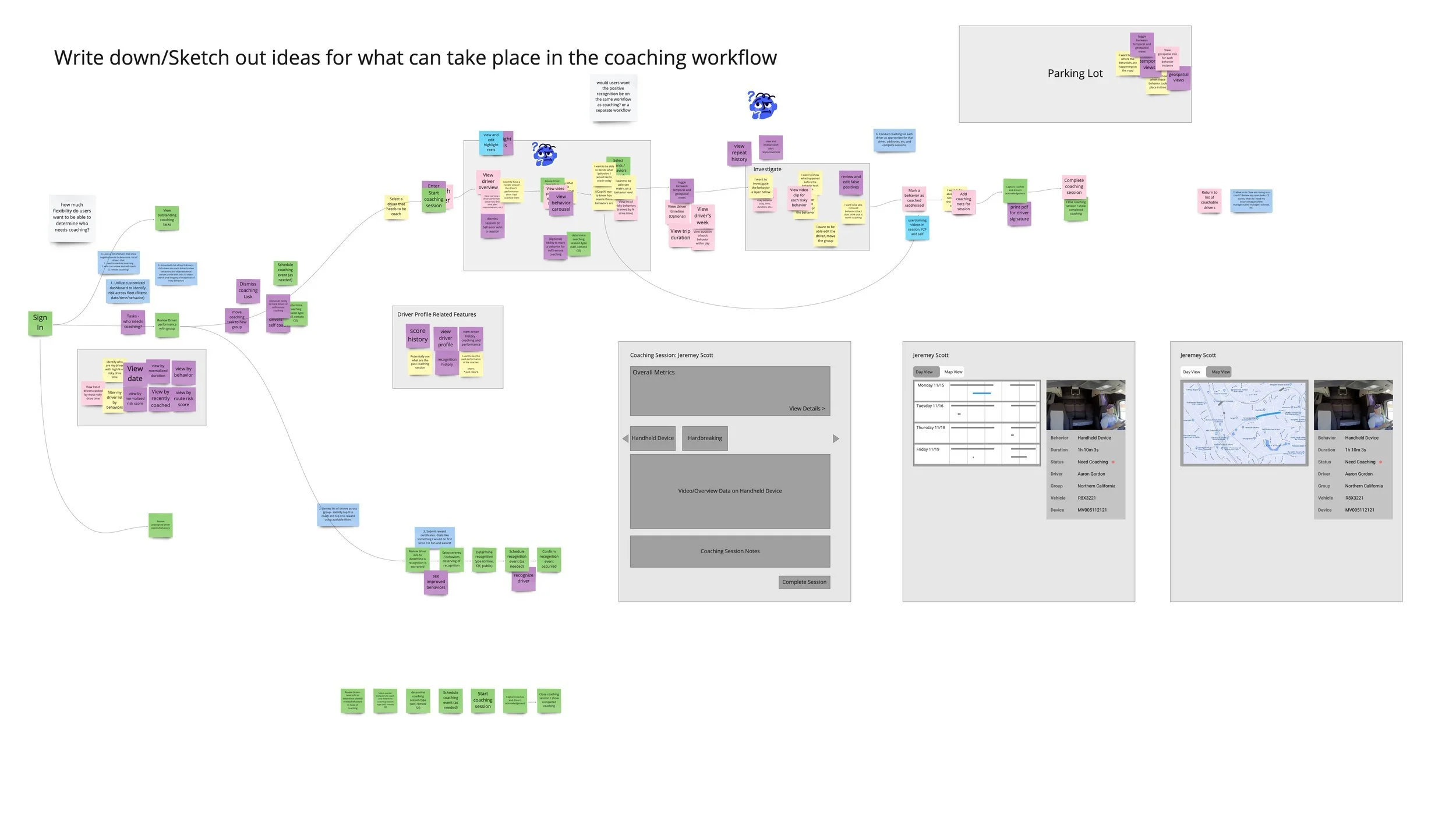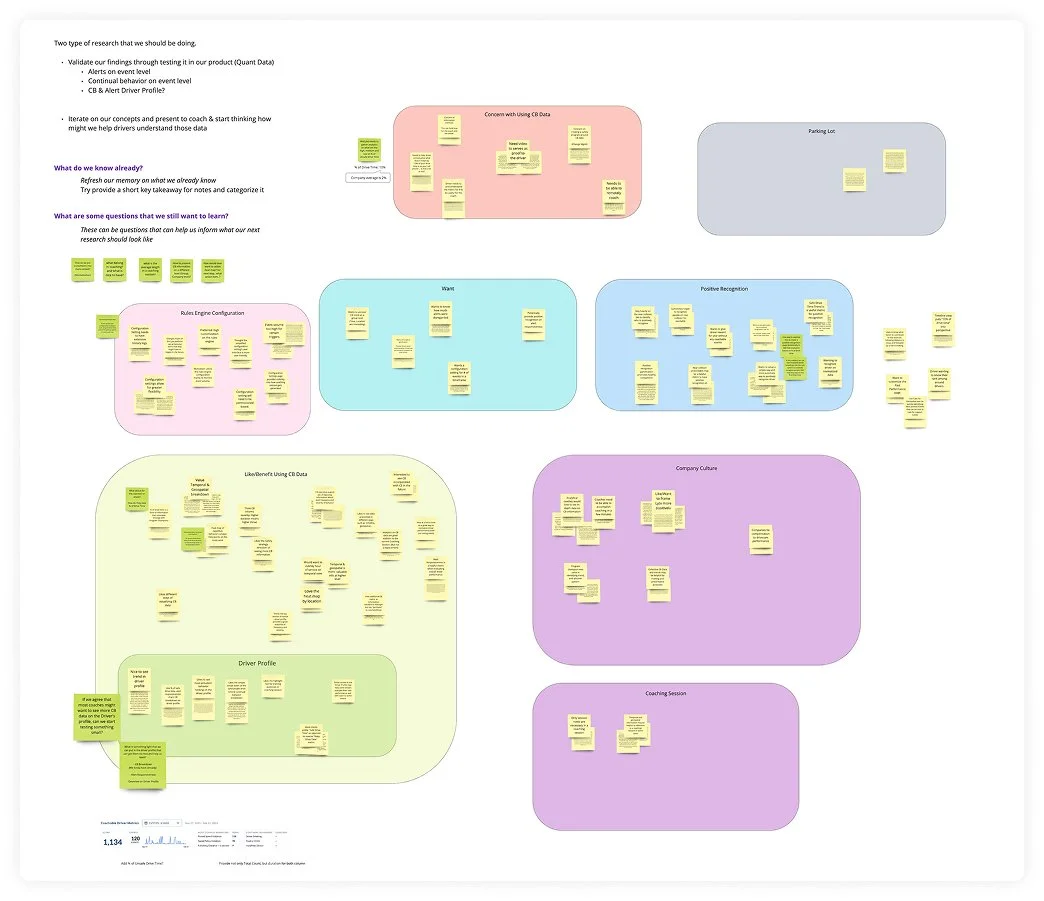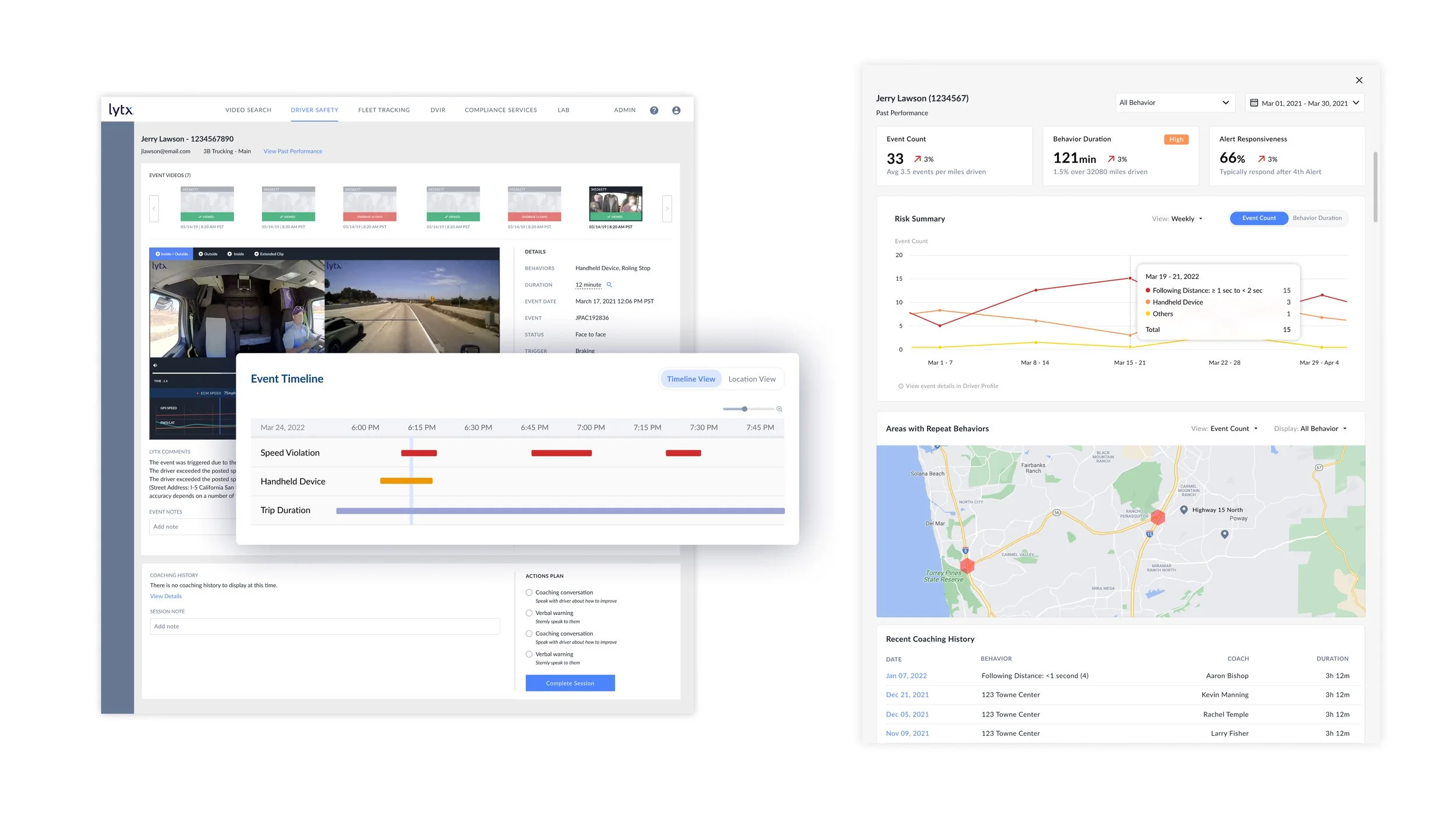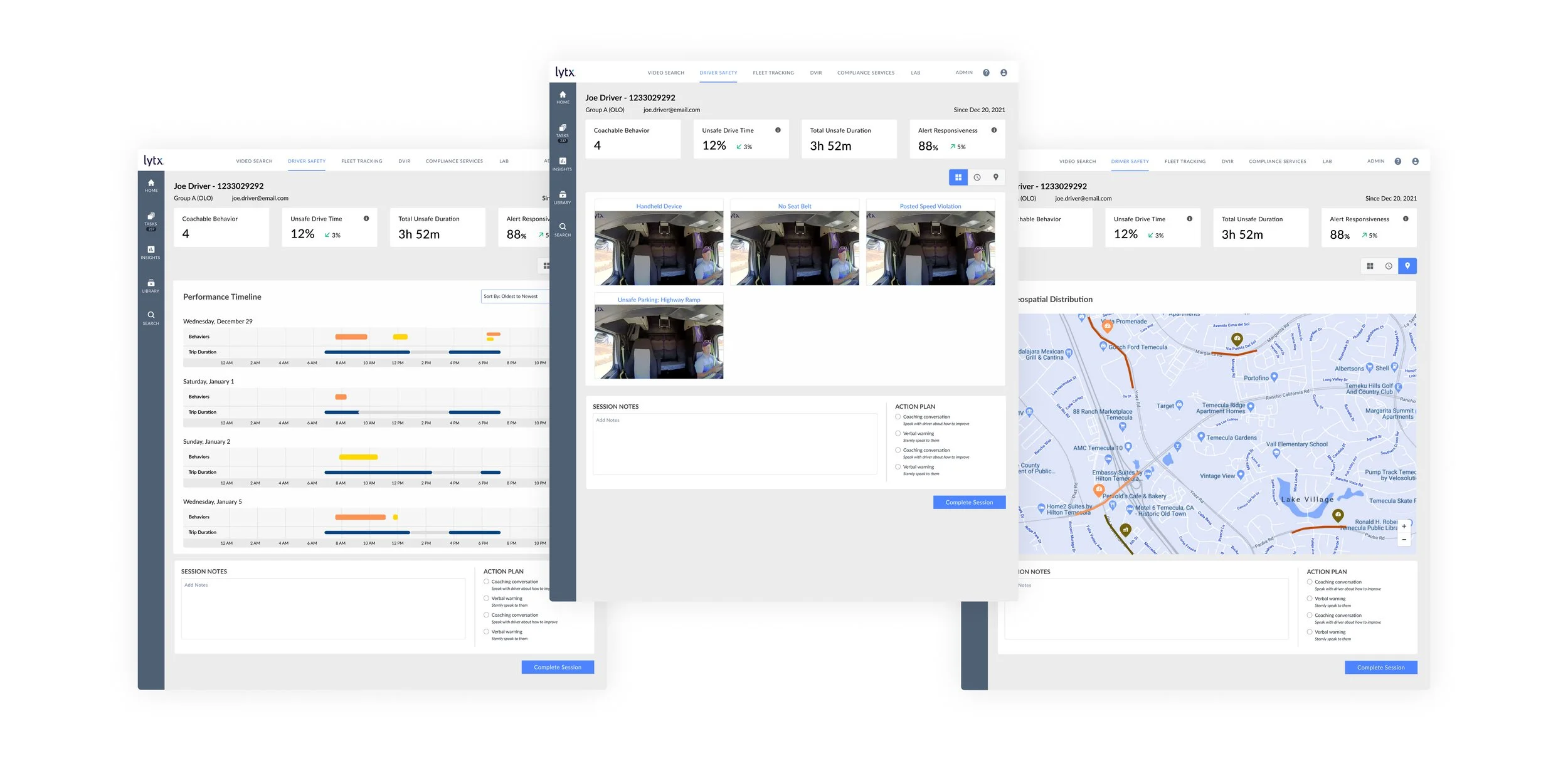Lytx Risk Model Exploration
Assessing the opportunity of continual risk monitoring
OVERVIEW
Lytx is a leading technology provider that helps fleets understand driver behavior and improve road safety through video and machine learning.
This project supported a broader initiative to modernize Lytx’s safety management platform and unlock new business value through smarter insights. Traditionally, driver performance was measured using instance-based metrics (e.g., how many times a driver sped in a week). With advancements in machine learning, Lytx wanted to explore more holistic ways to measure driver behavior — moving beyond how often an event occurs, to understanding how long it persists.
This project aimed to gauge the market’s appetite for deeper, context-rich safety insights by shifting from event-based metrics to continual risk monitoring.
MY ROLE
As the lead designer on this strategic initiative, I partnered with product leadership to explore and assess the viability of shifting toward continual risk monitoring in practice.
My goal was to uncover how fleet managers perceived this emerging model and what challenges or opportunities it introduced.
Key contributions:
Facilitated cross-functional workshops to align teams and surface assumptions
Led user interviews to understand fleet managers’ mindsets, needs, and blockers
Synthesized research into actionable design directions that shaped product strategy
Translated abstract ideas into wireframes and prototypes to drive alignment and guide roadmap planning
CHALLENGE
This project initially presented a range of challenges, including:
A broad and ambiguous scope, which made it difficult to determine where to begin or how to define success
Limited analytics depth, leaving us without a clear picture of how users engaged with the existing tool at scale
Strategic uncertainty around how significantly continual risk monitoring should reshape the coaching workflow — and whether it should be introduced gradually or as a full shift
How I navigated these challenges:
Aligned stakeholders early around overarching business goals to narrow the scope and focus on designing meaningful metrics and identifying their role in the coaching experience
Created early prototypes and testable concepts to validate assumptions, spark discussion, and explore how continual risk monitoring could be introduced
Partnered with customers and internal teams to gather feedback, identify risks, and guide decisions on how deeply and gradually the model should be introduced
KEY INSIGHTS
Through interviews, observation, and co-creation with customers, we uncovered key insights that shaped how we approached the product experience.
Coaches were excited to see metrics that go beyond frequency — they wanted context to understand the severity and patterns of risky behavior.
Event count alone wasn’t enough. Coaches found value in metrics like behavior duration because they reveal how long risky behavior lasts — helping them assess severity and tailor coaching more effectively.
"It's not just about frequency — this gives the coach real insight going into the session to actually change behavior."
— Safety Manager, Enterprise Fleet
Understanding risky behavior in context — by time and location — helped managers speak with more confidence
Safety managers valued temporal and geospatial insights — especially for understanding regional and company-wide risk patterns. This context helped them fine-tune safety protocols and support coaches with more relevant, actionable information.
For many fleets, continual metrics were seen as a valuable supplement to add context, but not a replacement for event-based tracking.
While many users saw value in continual risk metrics, some expressed hesitation about disrupting existing workflows. Event counts were deeply embedded in coaching systems, monthly reporting, compensation structures, and safety goals — making a full shift feel risky or unrealistic.
"Our entire coaching scorecard is built on event counts — that’s what our bonuses and reporting are tied to. Changing that isn’t a small shift.
— Safety Director, Multiple Freight Companies
Lack of positive framing limits how motivating coaching can be.
While this project focused on continual risk monitoring, many customers brought up a related need: the desire for more positive framing. They wanted tools that help motivate drivers by recognizing improvements — and support coaches in creating sessions that feel encouraging, not just corrective.
"Sometimes I wish the system could show progress too — like, ‘Hey, this driver improved.’ That would make the session feel more like support than punishment.."
— Safety Director, Enterprise Fleet
"If every time you talk to them is about something negative, they're not gonna want to talk to you, and you won’t get what you want from that coaching session."
— Safety Director, Enterprise Fleet
STRATEGIC
OUTCOME
By grounding exploration in practical impact and business opportunity, this initiative helped define near-term enhancements while informing longer-term investment areas across the roadmap.
Specifically, it:
Informed product direction by prioritizing new behavioral dimensions like duration and severity into the current safety coaching workflow
Sparked cross-functional alignment on how coaching models may evolve to include time- and location-based context
Led to deeper investment in exploring how positive trends and progress can be surfaced to support driver engagement and coach morale


